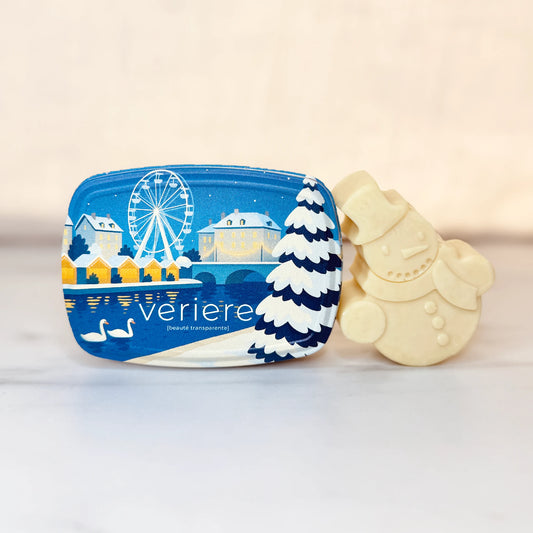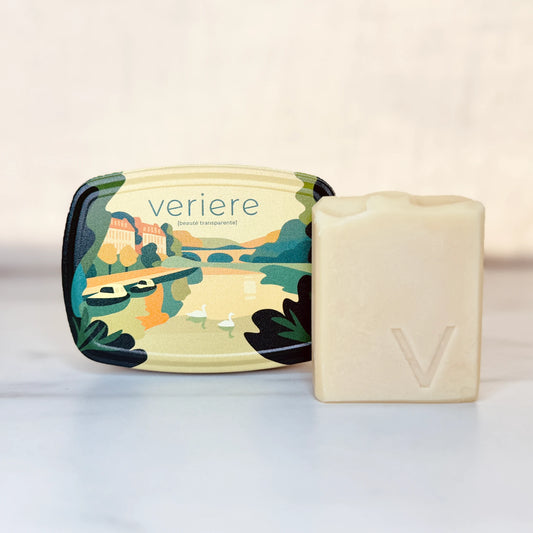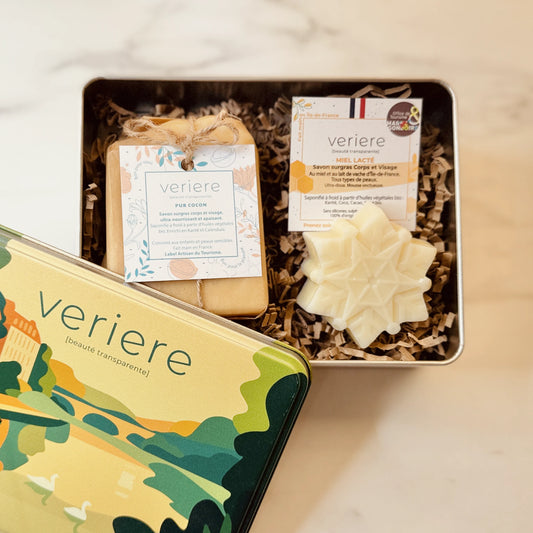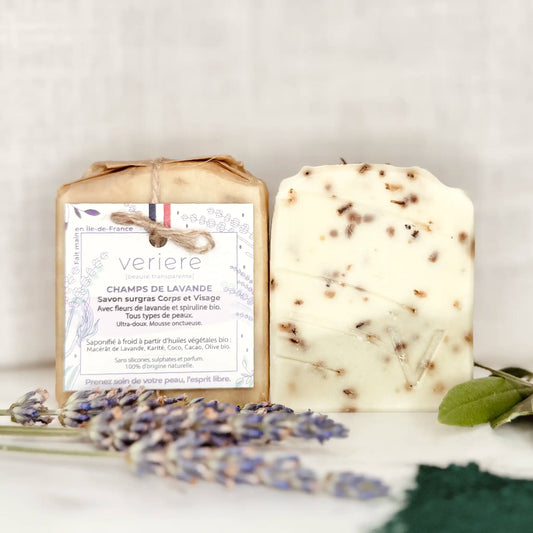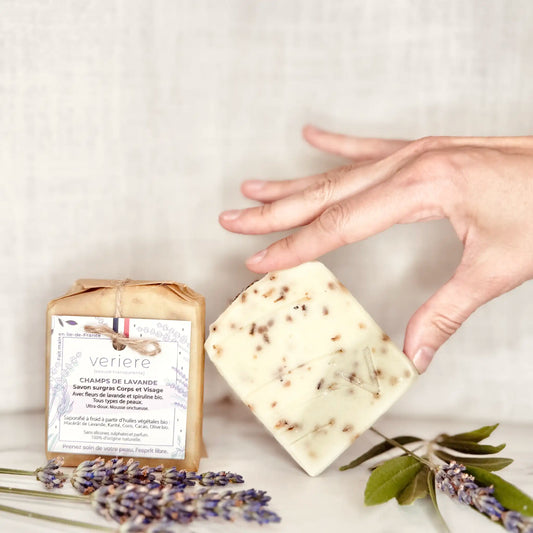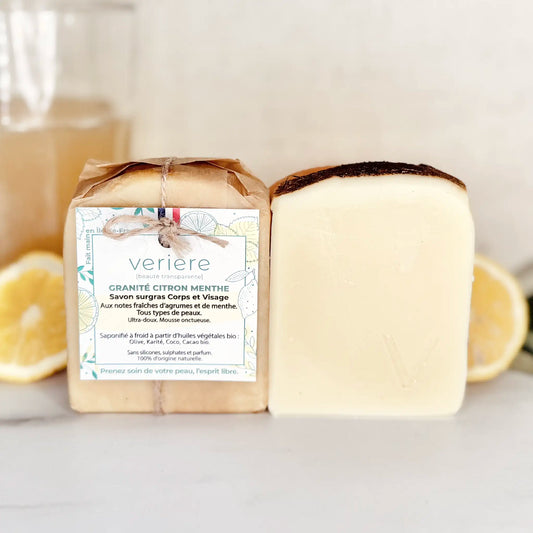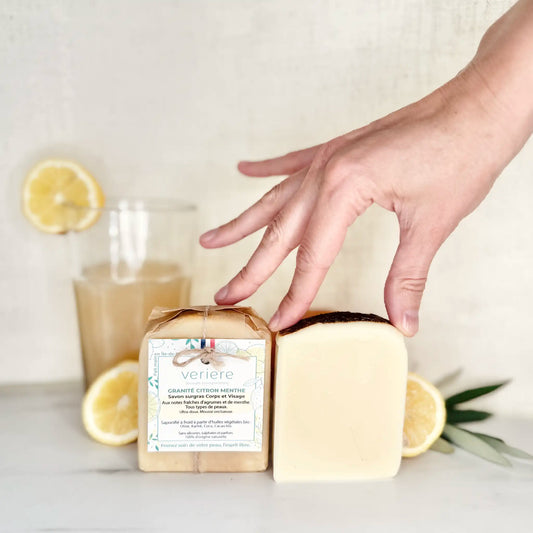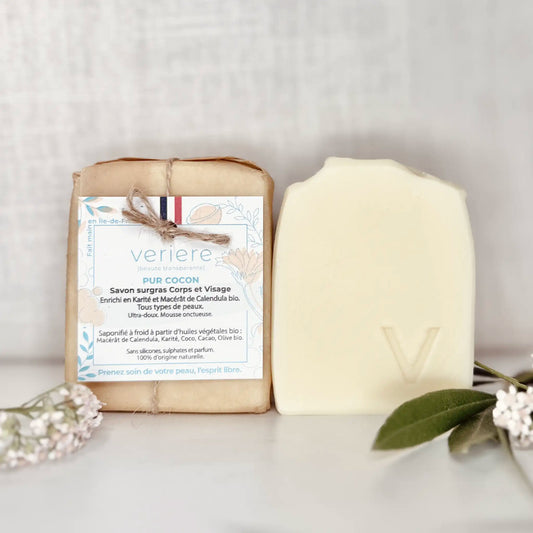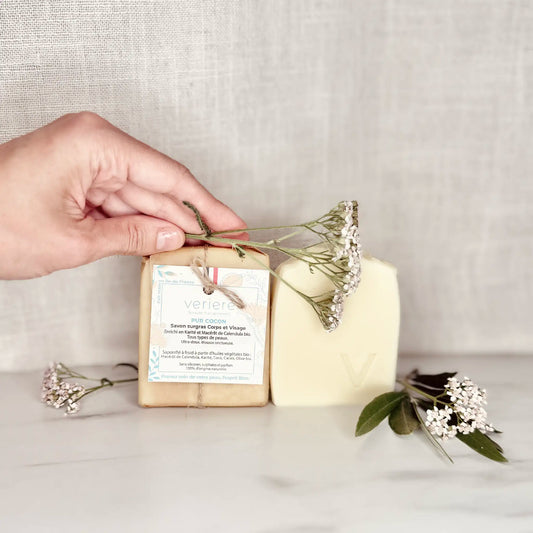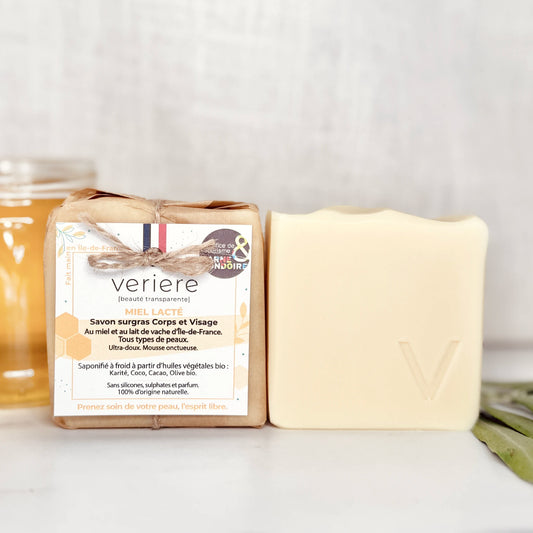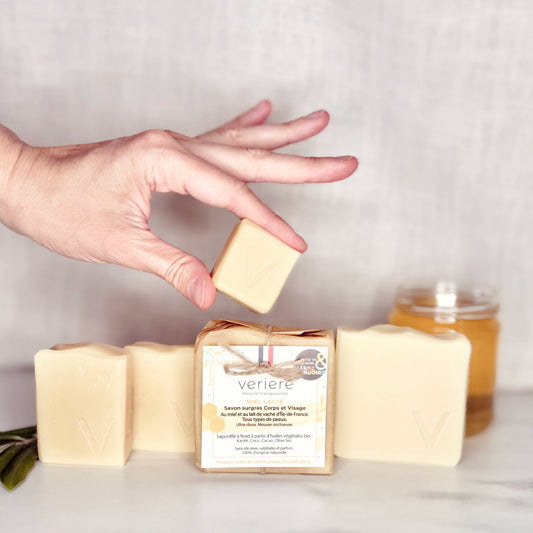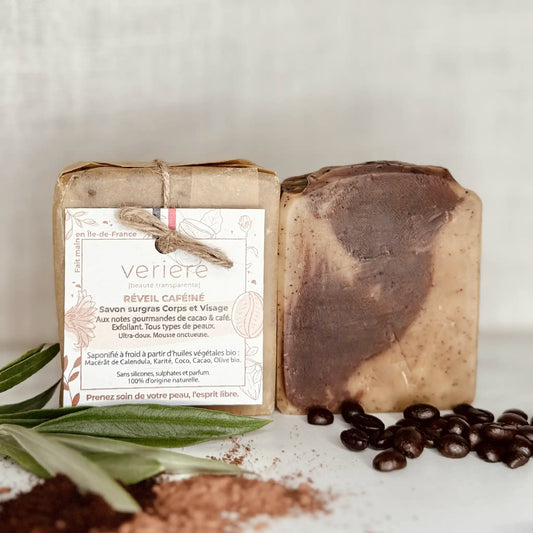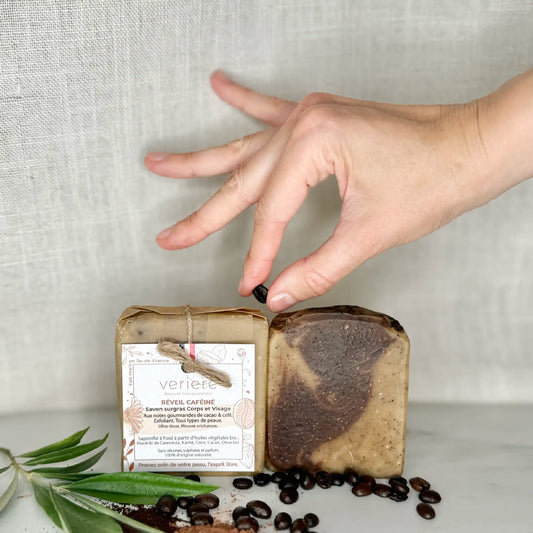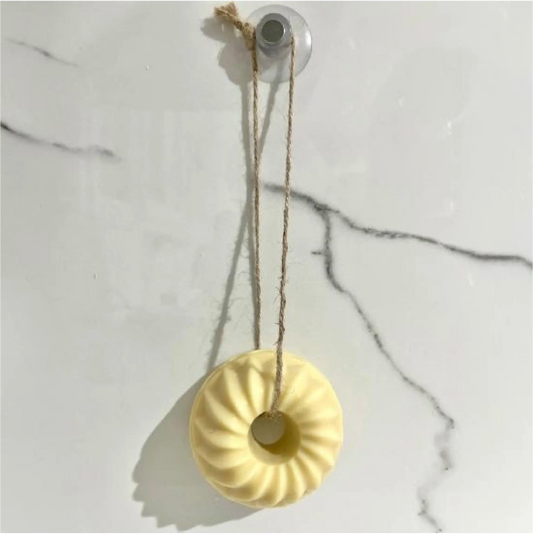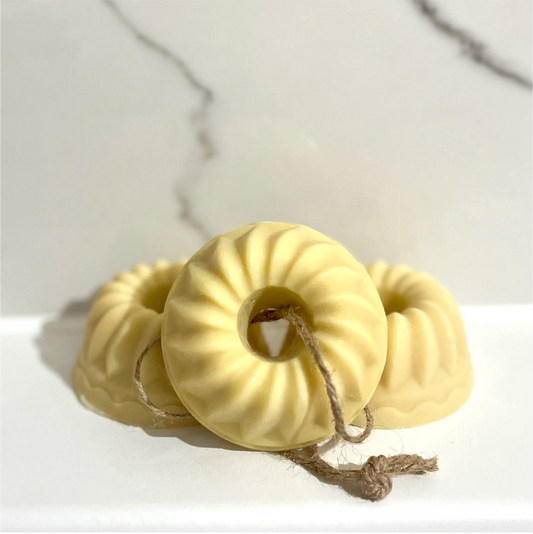
Cold saponification: advantages and disadvantages
Partager
Cold saponification is an ancestral soap production process. This method owes its name to the fact that it requires little heating in order to fully benefit from the benefits of the natural ingredients. It is used mainly by artisan soap makers who make soap in an artisanal or small-scale way like Veriere.
Here are the steps of cold saponification:
-
Mixing Fats and Water: First, fats (oil, butter, etc.) are mixed with water and a catalyst called caustic soda.
-
Stirring: The mixture is stirred until it thickens and becomes paste-like, leaving a trail. This trail is named after a key step in cold saponification, called "the trail," as it indicates that the process is working.
-
Addition of essential oils and other ingredients: At the trace, essential oils or other ingredients such as milk, honey, flowers, spices, clays, etc. can be added to give the soap specific properties. We also add to our soaps certain sensitive vegetable oils at that time in order to increase the superfatting while preserving all the qualities of these oils. For example, the Pur Cocon soap contains Calendula macerate, a very sensitive oil, which we add at the trace to preserve all its soothing properties.
-
Molding: The soap is poured into a mold for 48 hours. It will then dry for 4 weeks away from light, heat and humidity.

Veriere is a member of the association of new soap makers, promoting cold saponification.
Here are the advantages of cold saponification:
-
Preservation of the properties of oils: cold saponification allows the properties of the oils used in the production of soap to be preserved. Indeed, when the oils are heated, some of their properties can be lost or altered.
-
Fewer Chemicals: Cold process soap making reduces the amount of chemicals in the soap, as heat can release unwanted chemicals into the soap.
-
More natural: Soaps produced by cold saponification are considered to be more natural because they are made from natural ingredients such as oils and butters.
Here are the disadvantages of cold saponification:
-
Longer production time: Cold process saponification generally takes longer than hot process saponification, among other things, because the soap curing process takes several weeks.
-
Color change: Soap produced by cold saponification may be subject to color changes over time. This does not change its primary qualities in any way, it is purely aesthetic. Veriere's desire is not to use chemical additives to preserve the color or smell of a soap for several years... We create products that respect the skin as much as possible. It goes without saying that the green color naturally added with organic spirulina to Champs de Lavande soap will fade over time, unlike some industrial soaps that are resistant over time but full of additives that are harmful to the skin and the environment.

